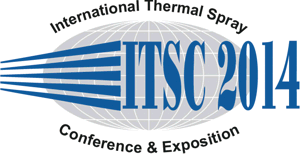
|
4170 |
|
Acoustically levitated droplets as a model system for evaporation and polymerization in spraying processes |
|
Annelie Halfar* / Universität Hamburg
Institut für Technische und Makromolekulare Chemie
AK Moritz, Deutschland |
|
Evaporation and polymerization in an acoustic levitator gives an approach to a deeper understanding of the processes which take place in a single droplet during spraying. Thus, acoustic levitation provides the opportunity to determine correlations between process conditions and product properties in a much more efficient way than by experiments in a spray tower. In this work, the solution polymerization of partially neutralized acrylic acid was investigated. For all experiments, single droplets were levitated at defined conditions. Pictures were taken online every 0.3 seconds by using a CCD-camera. Subsequently, the droplet sizes were determined by shadowgraphy. For that purpose, the taken gray-level pictures were thresholded and the droplet size calculated by an ellipsoid whose center corresponds to the center of the droplet.[1] Regarding the decrease of droplet size over time is a common method to determine the evaporation coefficient of the observed system.[1] In this work, by showing the change of droplet size over time, it will be possible to elucidate specific mass transport phenomena for different systems. It will be shown how the composition of the material system and the process parameters influence the evaporation characteristic of the droplets. Apart from evaporation characteristics, it is of interest how the different process parameters influence the particle properties in case of polymerization.[2] The Design of Experiments (DoE) gives the opportunity to elucidate these correlations. In this work, different DoE models will be presented with the corresponding experiments in the acoustic levitator. For these models, different factors were considered, e.g. temperature, initiator concentration or monomer concentration. The analysis of the polymerized particles, considering the previously defined target parameters (e.g. porosity, morphology), will give a correlation between the chosen process conditions and the product properties. Finally, the conclusions will be compared to the results of the same experiments, carried out in a spray tower. For the analysis of the received particles common methods like SEM, mercury porosimetry, TGA were used. |